Fashion is not just about style; it's also about the materials that make up our clothing. From soft and breathable plant-based fabrics to luxurious animal-derived materials, versatile synthetic textiles, and semi-synthetic options like rayon, each type of fabric offers its unique characteristics and benefits. Let's delve into the most popular types of fabrics categorized based on their sources:

Plant-based Materials
-
Cotton
Known for its softness and breathability, cotton is one of the most widely used fabrics in the fashion industry. It's comfortable to wear and suitable for a wide range of garments, from T-shirts and jeans to dresses and bed linens.
Cotton, when not blended with synthetic fibers, is fully biodegradable. However, conventional cotton cultivation is water-intensive and relies heavily on insecticides, often linked to child and forced labor. The processing of cotton involves numerous chemical treatments for dyeing and finishing.
Organic cotton offers a solution to many of these issues. It is grown without pesticides and from non-genetically modified seeds. Organic farming methods prioritize sustainability and resource efficiency, avoiding harmful chemicals and promoting soil fertility. This results in longer-lasting agricultural land and livelihoods for organic cotton farmers. -
Linen
Made from the fibers of the flax plant, linen is prized for its durability and natural texture. It's often used in warm-weather clothing due to its ability to wick moisture away from the body, keeping the wearer cool and comfortable.
Linen stands out as one of the most eco-friendly and fashionable fabrics throughout fashion's evolution. Derived from flax plant fibers, linen boasts exceptional strength and natural resistance to moths. When left untreated, linen is fully biodegradable. Its remarkable ability to endure high temperatures and absorb moisture without harboring bacteria makes it a versatile choice. Interestingly, linen gains strength when wet and becomes softer and more flexible with each wash.
-
Bamboo
Bamboo fabric is gaining popularity in the fashion world due to its sustainability and eco-friendly properties. It's soft, lightweight, and has natural antibacterial properties, making it ideal for activewear, underwear, and loungewear.
This rapidly flourishing plant is currently enjoying heightened attention as a seemingly more environmentally friendly alternative. Although the crop's cultivation demands minimal water and does not necessitate pesticides, the methods employed to transform it into usable fabric exhibit varying degrees of sustainability. While mechanically-produced "bamboo linen" stands out as inherently more eco-friendly, the resulting fabric tends to be rough in texture, making it unsuitable for the soft, intimate products that bamboo is most sought after for. Additionally, this type of fabric is not widely accessible. -
Rayon/Viscose
Rayon, also known as viscose, is a semi-synthetic fabric made from natural cellulose fibers derived from wood pulp. It's valued for its softness, drape, and versatility, resembling natural fibers like cotton and silk. Rayon is used in a wide range of garments, including blouses, dresses, and linings.
Rayon originates from cellulose extracted from fast-growing trees like eucalyptus, beech, and pine, or from plants such as bamboo, soy, and sugar cane. This cellulose undergoes a chemical process to form a viscous substance, which is then spun into fibers for thread production.
Despite being plant-based, rayon faces significant challenges. It ranks as the third most popular fabric after polyester and cotton, and the rapid growth of fast fashion has led to extensive deforestation for its production. Additionally, untreated waste from rayon manufacturing is often dumped into waterways, causing harm to ecosystems and communities. -
Denim
Denim is a durable cotton twill fabric known for its versatility and ruggedness. It's most commonly associated with jeans but is also used in jackets, skirts, and other casual garments for its timeless appeal and durability.
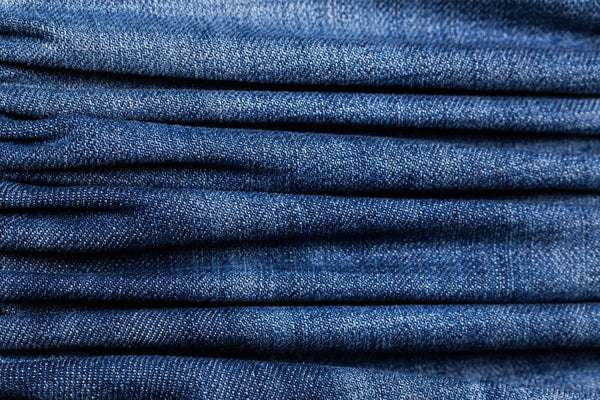
Denim is crafted from cotton, recognized as one of the most water-intensive crops globally. Despite occupying only 2.4% of agricultural land, cotton consumption amounts to over 11% of worldwide pesticide usage. These pesticides, known for their toxicity, present hazards to cotton farmers' working conditions. Additionally, the popular "distressed" denim look is achieved through a contentious method known as sandblasting, which poses serious health risks to workers due to the inhalation of fine dust particles that can settle in their lungs.
Also read: Reason To Buy Second Hand Jeans
Animal-derived Materials
-
Silk
Revered for its luxurious feel and lustrous sheen, silk is a natural protein fiber produced by silkworms. It's commonly used in high-end fashion garments such as dresses, blouses, and scarves for its smooth texture and elegant drape.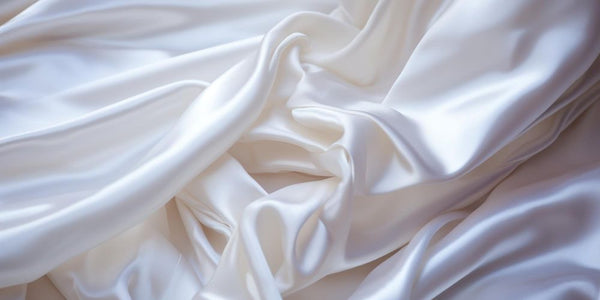
Silk originates from the lengthy strands found within the inner cocoon of a silkworm. These fibers are essentially the worm's saliva, serving to protect it until its metamorphosis. The raw silk threads are collected and subsequently spun together for industrial purposes. Regrettably, the silkworms are typically terminated during the silk extraction process. Furthermore, there have been documented instances of child labor exploitation in silk production in India, underscoring the significance of verifying sources.
Also read: Fashion's Silk Dilemma: Ethics & Sustainability Explored
-
Wool
Wool is derived from the fleece of sheep and is valued for its warmth, durability, and insulating properties. It's commonly used in sweaters, coats, and outerwear to provide protection against cold weather.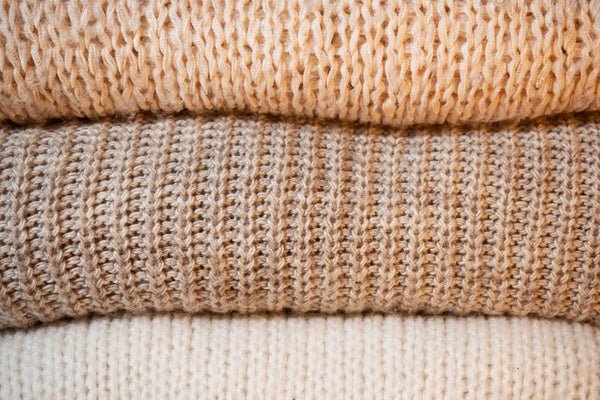
Wool, a breathable fiber derived from sheep, is a renewable material known for its stain resistance and, in some instances, biodegradability. Nevertheless, the environmental and ethical implications of wool production are significant. Controversy surrounds the practice of mulesing, a procedure involving the removal of skin to prevent flystrike in sheep, often conducted without anesthesia. We advise against purchasing wool from mulesed sheep due to these concerns. Moreover, large-scale livestock grazing can contribute to land clearing and degradation, although more sustainable grazing methods are gaining traction, they remain relatively uncommon. Additionally, wool that undergoes "superwashing" (infused with plastic) or is blended with synthetic fibers loses its biodegradability. Despite these challenges, wool is durable, making pre-loved or vintage wool items a worthwhile option to extend the lifespan of garments and reduce waste. -
Leather
Leather is a durable and versatile material made from the skin of animals, commonly cattle. It's often used in fashion for its strength, flexibility, and timeless appeal, appearing in garments such as jackets, shoes, and bags.
Despite their durability and adaptability, investing in leather garments and accessories is unlikely to align with ethical considerations. Leather, derived from the skin of various animals including livestock, pigs, goats, sheep, crocodiles, snakes, stingrays, seals, emus, deer, fish, kangaroos, horses, cats, and dogs, poses significant ethical dilemmas. Beyond concerns about animal welfare, leather production carries adverse effects on the environment and laborers. It demands extensive water and land resources, surpassing many other materials, and involves the use of hazardous chemicals like chromium 6 in the tanning process, which not only contaminates waterways but also poses risks to workers' health. -
Fur
Fur is a natural material obtained from the pelts of animals such as minks, foxes, and rabbits. It's prized for its warmth, softness, and luxurious appearance, often used in outerwear, accessories, and trimmings for its distinctive texture and insulation properties.
Traditionally, fur served as both a means of warmth and protection. Throughout history, animals were hunted primarily for their meat, while their fur provided a practical and durable material to shield individuals from the elements. However, in the 20th century, fur gained prominence in luxury fashion, especially when Hollywood stars flaunted themselves adorned in exotic pelts. This elevated fur to a symbol of affluence and glamour—seen as opulent and highly coveted. With the surge in fur's popularity, fur farming emerged as a lucrative industry.
Unfortunately, this commercialization led to the animals being treated as commodities, paving the way for inhumane practices such as skinning animals alive. For many, the idea of wearing fur is synonymous with cruelty and is vehemently opposed.
Synthetic Materials
-
Polyester
Polyester is a synthetic fiber that is known for its durability, wrinkle resistance, and affordability. It's widely used in fashion for its versatility and ability to mimic natural fibers, appearing in a variety of garments, including dresses, activewear, and outerwear.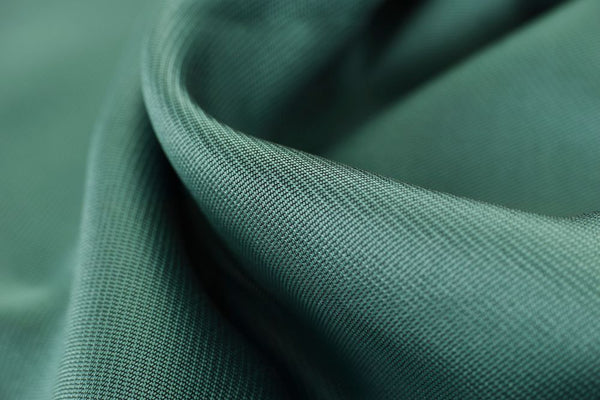
Polyester, a common plastic derived from petroleum, is widely used across industries, including fashion. It's the most utilized fiber globally, with polyethylene terephthalate (PET) being the primary type used in clothing. Most polyester fabrics are non-biodegradable, taking 20 to 200 years to decompose. Additionally, polyester's link to the petroleum industry exacerbates environmental concerns, as this sector is a leading global polluter. -
Nylon
Nylon is a synthetic polymer known for its strength, elasticity, and resistance to abrasion. It's commonly used in hosiery, swimwear, and activewear for its stretchability and quick-drying properties.
Nylon, the inaugural fully synthetic fiber, originated during World War II. It begins as a form of plastic sourced from coal and crude oil, undergoing a complex chemical procedure to produce the resilient, elastic fibers that render it valuable as a fabric. Apart from bolstering some of the planet's most polluting industries, the production of nylon entails numerous adverse environmental effects, making it detrimental on multiple fronts.
-
Spandex
Also known as Lycra or elastane, spandex is a synthetic fiber known for its exceptional elasticity. It's often blended with other fibers to add stretch and flexibility to garments such as leggings, swimwear, and sportswear.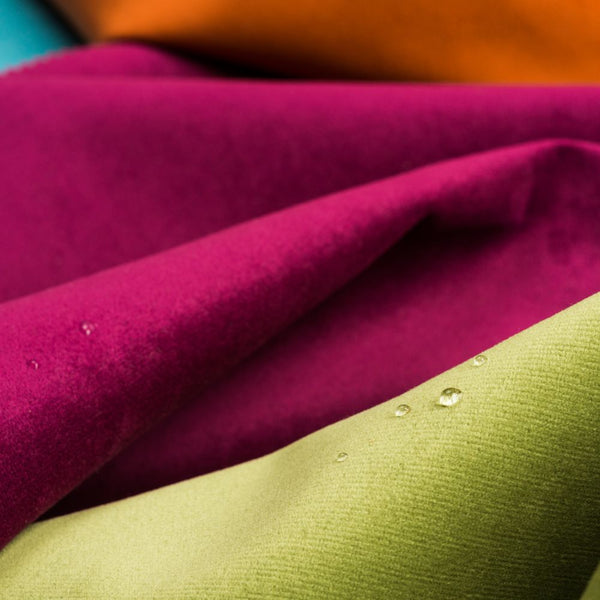
The material utilized to create elastane consists of a long chain synthetic polymer, comprising a minimum of 85% segmented polyurethane. There are potential variations in the manufacturing process of this fiber. Elastane is a highly stretchable fabric known for its comfort, ability to conform to the body's shape, and durability. It is typically blended with other fibers rather than used alone.
-
Velvet
Velvet is a luxurious fabric characterized by its soft pile and rich texture. It's commonly used in evening wear, formal attire, and upholstery for its plush feel and elegant appearance.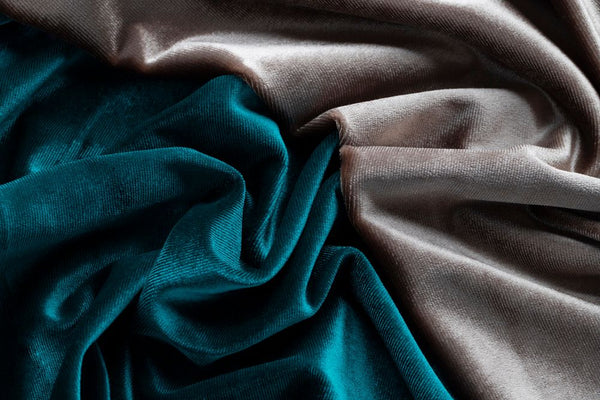
Velvet is characterized by its unique fabric structure rather than the specific fiber or material it's made from. Its distinctive features include a short pile with raised loops and tufts of yarn covering its surface. While traditionally woven from silk, modern velvet often incorporates more affordable materials like cotton, linen, wool, or synthetic fibers either alone or in combination. In the fashion world, particularly within fast fashion, polyester has become a common substitute for silk and other plant-based materials in velvet production.
In conclusion, the world of fashion offers a diverse array of fabrics, each with its unique characteristics and advantages. Whether you prefer the natural feel of plant-based materials, the luxuriousness of animal-derived fabrics, the versatility of synthetic textiles, or the timeless appeal of other popular fabrics like velvet and denim, there's a fabric out there to suit every style and preference. By understanding the properties and uses of different types of fabrics, you can make informed choices that align with your fashion goals and values.




